Introduction
August is a fantastic time to visit Iceland. With its relatively mild weather, long daylight hours, and a host of activities and cultural events, you can experience the country’s stunning landscapes and vibrant culture to the fullest. The Hill Hotel in Flúðir offers the perfect base for your Icelandic adventures. This guide will provide a comprehensive overview of what to do in Iceland in August, ensuring you have an unforgettable trip.
Why Visit Iceland in August?
August in Iceland offers a unique combination of favorable weather, extended daylight, and numerous activities, making it an ideal time to explore the country.
Weather in August
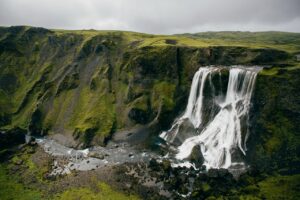
Iceland’s weather in August is quite mild compared to other months. You can expect average temperatures ranging from 10°C to 15°C (50°F to 59°F).
While Icelandic weather is notoriously unpredictable, August tends to offer some of the most stable conditions of the year. This makes it a great time for outdoor activities and exploring the country’s natural beauty.
Average Temperatures
In August, temperatures are generally comfortable, making it easy to enjoy both daytime excursions and evening activities. During the day, temperatures often reach up to 15°C (59°F), while at night they can drop to around 10°C (50°F). It’s important to dress in layers so you can easily adapt to changing conditions.
Daylight Hours
One of the biggest advantages of visiting Iceland in August is the extended daylight hours. With approximately 16-18 hours of daylight, you have plenty of time to explore the stunning landscapes and participate in various activities.
The long days mean you can fit more into your schedule without feeling rushed, allowing you to fully immerse yourself in the Icelandic experience.
Top Activities and Attractions in Iceland During August
Iceland offers a wide range of activities and attractions to explore in August. From vibrant city life in Reykjavik to breathtaking natural wonders, there’s something for everyone.
Exploring Reykjavik
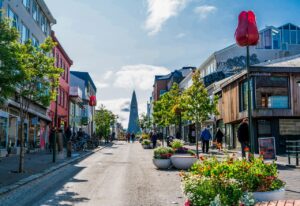
Reykjavik, the capital of Iceland, is a vibrant and dynamic city that serves as a great starting point for your Icelandic adventure. The city is known for its colorful buildings, lively arts scene, and unique cultural attractions. Here are some highlights to explore:
- Hallgrimskirkja Church: This iconic church is one of Reykjavik’s most recognizable landmarks. Take the elevator to the top for panoramic views of the city and surrounding landscapes.
- Harpa Concert Hall: Located by the waterfront, Harpa is a stunning piece of architecture and a hub for cultural events, including concerts, conferences, and exhibitions.
- Reykjavik’s Old Harbour: Stroll along the harbour, where you’ll find a mix of old fishing boats, modern vessels, and plenty of seafood restaurants.
- Museums: Reykjavik is home to several museums, including the National Museum of Iceland, the Reykjavik Art Museum, and the Settlement Exhibition, which offers insights into Iceland’s history and culture.
- Street Art: Reykjavik’s streets are adorned with colorful murals and street art. Take a walking tour to discover some of the city’s best pieces.
Golden Circle Tour
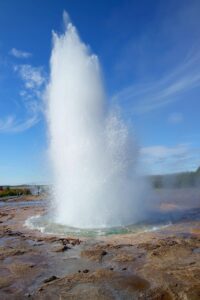
The Golden Circle is one of Iceland’s most popular tourist routes, and for good reason. This loop covers some of the country’s most iconic natural attractions, all within a day’s drive from Reykjavik. Key stops include:
- Thingvellir National Park: This UNESCO World Heritage Site is not only geologically significant but also historically important. Walk between the North American and Eurasian tectonic plates and learn about the site where Iceland’s parliament was founded in 930 AD.
- Geysir Geothermal Area: Witness the powerful Strokkur geyser as it erupts every 5-10 minutes, shooting hot water up to 20 meters (65 feet) into the air. The area is dotted with other hot springs and bubbling mud pots.
- Gullfoss Waterfall: Known as the “Golden Waterfall,” Gullfoss is a spectacular two-tiered waterfall that plunges into a deep canyon. The sheer power and beauty of this waterfall make it a must-see.
South Coast Adventures
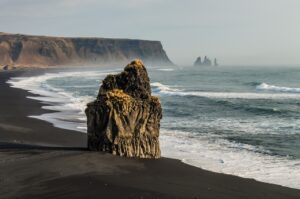
The South Coast of Iceland is renowned for its dramatic landscapes and stunning natural attractions. Some highlights include:
- Seljalandsfoss Waterfall: One of Iceland’s most famous waterfalls, Seljalandsfoss is unique because you can walk behind the cascading water. It’s an incredible experience and a great photo opportunity.
- Skógafoss Waterfall: Another iconic waterfall, Skógafoss is one of the largest in Iceland. Climb the stairs to the top for a stunning view of the waterfall and surrounding area.
- Reynisfjara Black Sand Beach: Located near the village of Vík, this black sand beach is famous for its striking basalt columns and powerful waves. It’s a beautiful and eerie place to visit.
- Jokulsarlon Glacier Lagoon: This glacial lagoon is filled with floating icebergs of all shapes and sizes. Take a boat tour to get up close to the icebergs and possibly spot some seals.
Westfjords Exploration
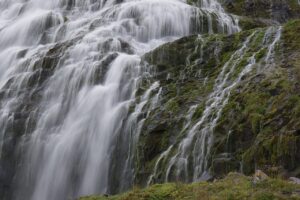
The Westfjords are one of Iceland’s most remote and rugged regions, offering stunning natural beauty and fewer tourists. Highlights include:
- Dynjandi Waterfall: Also known as “The Jewel of the Westfjords,” Dynjandi is a series of cascading waterfalls that together form a dramatic and impressive sight.
- Látrabjarg Cliffs: These cliffs are the westernmost point of Iceland and one of the largest bird cliffs in Europe. It’s a great place to see puffins and other seabirds up close.
- Hot Springs: The Westfjords are home to several natural hot springs where you can relax and enjoy the beautiful surroundings. Reykjafjordur and Hellulaug are two popular spots.
Northern Lights and Stargazing
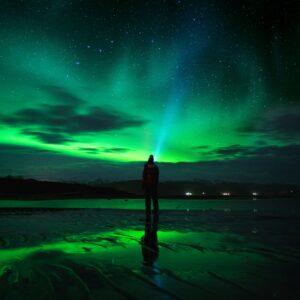
While the Northern Lights are more commonly associated with the winter months, it’s possible to see them in late August as the nights start to get darker.
Head to remote areas away from city lights for the best chances of witnessing this natural phenomenon. Stargazing in Iceland is also a treat, with minimal light pollution providing a clear view of the constellations.
The Hill Hotel itself sits perfectly away from ambient city lights and nestled in amongst some of the greatest natural landmarks to gaze up to the heavens from (just saying!)
Wildlife Watching
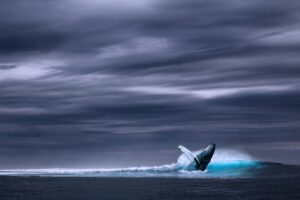
Iceland is a paradise for wildlife enthusiasts. August is a great time for whale watching, with tours departing from Reykjavik and Husavik.
Look out for minke whales, humpbacks, and even blue whales. Puffin watching is also popular, with these adorable birds nesting on coastal cliffs such as Dyrhólaey and Borgarfjörður Eystri. Other wildlife you might encounter includes seals, Arctic foxes, and a variety of bird species.
The Best Outdoor Activities in Iceland During August
Iceland’s diverse landscapes and favorable weather in August make it an ideal destination for outdoor activities.
Hiking and Trekking
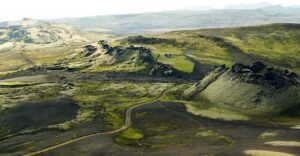
Iceland offers some of the best hiking and trekking opportunities in the world, with trails that take you through diverse and breathtaking landscapes. Some top hikes include:
- Laugavegur Trail: This multi-day trek is one of Iceland’s most famous and takes you through a variety of landscapes, including geothermal areas, glaciers, and mountains. The trail runs from Landmannalaugar to Thorsmork and can be extended to Skogar.
- Reykjadalur Hot Springs: This hike is relatively short and easy, making it perfect for a day trip. The trail takes you through beautiful valleys and geothermal areas to a hot river where you can take a relaxing dip.
- Fimmvorduhals Trail: This challenging hike connects Skogar and Thorsmork, taking you past stunning waterfalls, over a volcanic landscape, and through lush valleys. It’s a demanding but incredibly rewarding trek.
Glacier Adventures
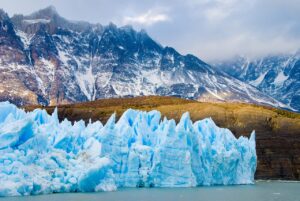
Iceland’s glaciers are a major draw for adventure seekers. August is a great time for glacier activities, as the weather is mild and conditions are generally safe. Some popular glacier adventures include:
- Glacier Hiking: Explore the icy terrain of glaciers such as Sólheimajökull and Vatnajökull with a guided glacier hike. These tours typically include all necessary equipment and expert guides to ensure your safety.
- Ice Climbing: For a more challenging adventure, try ice climbing on a glacier. Guided tours are available for all skill levels, providing instruction and equipment for a safe and thrilling experience.
- Snowmobiling: Experience the thrill of snowmobiling on a glacier, racing across the ice and taking in the stunning views. Tours are available from several locations, including Vatnajökull and Langjökull.
Hot Springs and Geothermal Pools
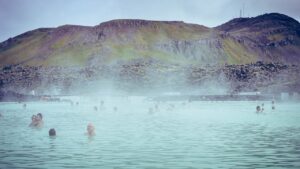
Soaking in a hot spring or geothermal pool is a quintessential Icelandic experience, and August is a great time to enjoy this relaxing activity. Some popular spots include:
- Blue Lagoon: Located near Reykjavik, the Blue Lagoon is one of Iceland’s most famous attractions. The warm, mineral-rich waters are said to have healing properties, and the modern facilities include a spa, restaurants, and bars.
- Secret Lagoon: Located in the small village of Fludir, the Secret Lagoon is a more natural and less crowded alternative to the Blue Lagoon. The pool is surrounded by beautiful scenery, including a small geyser that erupts regularly. Guests of the Hill Hotel will also receive a 25% discount on entry.
- Reykjadalur Hot Springs: As mentioned earlier, the Reykjadalur hike takes you to a hot river where you can soak in the warm water while enjoying the surrounding nature.
Cultural Experiences
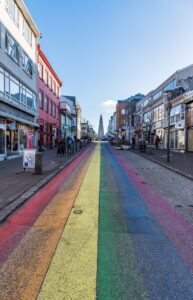
August is filled with cultural events and festivals that offer a glimpse into Icelandic life and traditions.
Merchants Weekend (Verslunarmannahelgi)
The first weekend in August is celebrated nationwide as Merchants Weekend, or Verslunarmannahelgi. This festival includes music events, camping, and parties. One of the largest gatherings takes place in the Westman Islands, where thousands of people come together to enjoy live music, fireworks, and festivities.
Culture Night (Meningarnótt)
Reykjavik’s Culture Night, held in mid-August, is a city-wide celebration of arts and culture. Streets are closed to traffic, and the city is filled with performances, exhibitions, and events. The night culminates in a spectacular fireworks display over the harbor, creating a magical atmosphere.
Reykjavik Pride
Reykjavik Pride is a vibrant celebration of love and diversity, featuring a colorful parade through the city streets, concerts, parties, and cultural events. It’s a welcoming and inclusive event that showcases the best of Icelandic hospitality and community spirit.
Fireworks and Celebrations
Various smaller festivals and spontaneous celebrations occur throughout August, often featuring fireworks. These events provide a festive atmosphere and an opportunity to experience local traditions and community spirit.
Icelandic Music and Art in August
Iceland’s music and art scenes are as dynamic as its landscapes. August is a great time to dive into this vibrant culture. Reykjavik hosts numerous galleries and live music venues where you can experience the creativity and talent of Icelandic artists. The city’s vibrant cultural landscape offers everything from contemporary art exhibitions to traditional music performances.
Art Exhibitions
Reykjavik is home to several galleries and art museums showcasing both contemporary and traditional Icelandic art. The Reykjavik Art Museum has multiple locations, each with its own unique focus. The National Gallery of Iceland also offers an extensive collection of Icelandic and international art.
Live Music
Iceland has a thriving music scene, and August is a great time to catch live performances. Many bars and clubs in Reykjavik host live music events, featuring both local and international artists. The city also has several music festivals during the summer months, offering a wide range of genres.
Why August is One of the Best Months to Visit Iceland
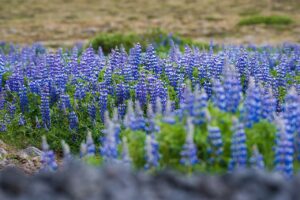
August combines favorable weather, extended daylight, and a host of activities, making it an ideal time to visit Iceland.
You Can See the Northern Lights in Iceland in August (towards the end of the month)
While the Northern Lights are more commonly associated with the winter months, late August offers a chance to see this incredible natural phenomenon. As the nights start to get darker, head to remote areas away from city lights for the best chances of witnessing the auroras.
You Have Plenty of Daylight Hours to Explore
With around 16-18 hours of daylight, you have ample time to explore Iceland’s attractions without feeling rushed. The extended daylight allows for a more relaxed and enjoyable experience, giving you the opportunity to fully immerse yourself in the country’s natural beauty and cultural offerings.
You Can Still Visit the Icelandic Highlands
The Highlands, accessible during the summer months, offer some of Iceland’s most dramatic and untouched landscapes. August is one of the best times to explore this region, with its rugged terrain and stunning vistas. Popular destinations in the Highlands include Landmannalaugar, known for its colorful rhyolite mountains and geothermal activity, and Thorsmork, a lush valley surrounded by glaciers.
Better Weather Conditions
August typically offers mild and stable weather, making it one of the most pleasant times to visit Iceland. The comfortable temperatures and fewer storms mean you can enjoy your outdoor activities without battling harsh conditions. This makes August an ideal time for hiking, exploring, and participating in outdoor adventures.
Travel Tips For Visiting Iceland in August

To ensure a smooth and enjoyable trip to Iceland in August, consider these practical tips:
- Pack layers: The weather can change quickly, so bring layers to stay comfortable. Waterproof and windproof outer layers are essential, along with warm mid-layers and breathable base layers.
- Book in advance: August is a popular time to visit, so book your accommodation and tours early to avoid disappointment. This is especially important for popular attractions and activities like the Blue Lagoon and guided tours.
- Rent a car: Having your own vehicle provides flexibility and allows you to explore at your own pace. Make sure to check road conditions and be aware that some areas, especially in the Highlands, require a 4×4 vehicle.
- Stay hydrated: With so much to see and do, it’s easy to forget to drink water. Iceland’s tap water is pure and delicious, so keep hydrated by carrying a reusable water bottle.
- Respect nature: Iceland’s landscapes are delicate. Stick to marked paths, take your trash with you, and respect wildlife and natural features. Leave no trace and help preserve the beauty of the country for future visitors.
Final Tips for an Unforgettable August in Iceland
- Embrace the local culture: Engage with locals, try Icelandic cuisine, and participate in festivals to enrich your experience. Icelandic people are known for their friendliness and hospitality, so don’t hesitate to strike up a conversation.
- Capture the moments: Iceland’s landscapes are stunning, so bring a good camera and take plenty of photos. However, also take time to simply enjoy the views without the lens. Some moments are best experienced without distraction.
- Be spontaneous: While planning is essential, leave room for spontaneous adventures. Some of the best experiences come from unexpected discoveries. Whether it’s a hidden hot spring, a local festival, or a scenic viewpoint, be open to changing your plans.
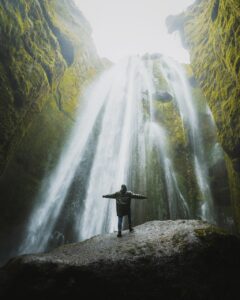
Conclusion
Iceland in August is a destination that offers a perfect blend of natural beauty, cultural richness, and outdoor adventure. With long daylight hours, mild weather, and a host of activities and events, it’s an ideal time to explore this unique country. The Hill Hotel provides a comfortable and convenient base for your Icelandic journey, ensuring you have an unforgettable experience. Pack your sense of adventure, and get ready to discover the wonders of Iceland in August.

